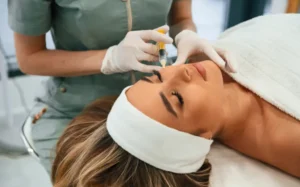How to Write a Cover Letter I: Simple Steps to Make Yours Shine
How to Write a Cover Letter I is something many people search when they want a job but are not sure how to start. A cover letter is like a small hello to the person who may give you the job. It tells them who you are, why you want the job, and why you are a good choice. It is not just a piece of paper; it is your first chance to make a friendly and strong impression. Many people think it is hard, but when you break it into small steps, it becomes very simple. You just need to know what to say and how to say it clearly. In this guide, I will explain in very easy words so you can write your own letter without feeling confused or scared. You will learn the basics and even a few smart tips that can make your letter stand out.
When learning how to write a cover letter I, the most important thing is to think about the person who will read it. Imagine they are very busy and have a big pile of letters to read. Your letter needs to be short, clear, and friendly so they remember you. You should start with a greeting, tell them why you are writing, share a little about your skills, and end with a kind thank-you. Use simple words and short sentences so your message is easy to read. Avoid long and boring details—save those for your CV. If you can, add one small story or example to show why you would be good at the job. This makes you sound real and interesting, not just another name on paper. Remember, a cover letter is your “first handshake” with the company, so make it warm, honest, and confident.
Why a Cover Letter Still Matters in Today’s Job World
Even with online forms and quick applications, a cover letter is still your chance to stand out. Many people skip it, so if you take time to write one, you already look more serious. A good letter shows that you care about the job, that you can write clearly, and that you know how to speak in a professional yet warm way. It’s like saying, “I’m not just sending a CV—I want you to know me.”
Simple Step-by-Step Guide for How to Write a Cover Letter I
- Start With Your Contact Info – At the top, write your name, phone number, and email.
- Add the Date and Company Details – Put the date and the company’s name and address.
- Greet the Right Person – Use “Dear Mr. Smith” or “Dear Ms. Khan” if you know the name. If not, “Dear Hiring Manager” is fine.
- First Paragraph – Say why you are writing, what job you want, and where you found it.
- Middle Paragraph – Share one or two skills or experiences that make you a good fit.
- Last Paragraph – Thank them, say you hope to meet, and sign your name.
Choosing the Right Words to Show Confidence and Kindness
When writing your cover letter, use words that sound friendly but sure of yourself. Avoid sounding too shy or too proud. For example, instead of saying “I think I might be good at this,” say “I believe my skills match this role well.” Keep sentences short so they are easy to read. Always check your spelling and grammar, because mistakes can make your letter look rushed.
Common Mistakes People Make When Learning How to Write a Cover Letter I
Many job seekers make the same errors:
- Writing one generic letter for every job (instead, change it for each role).
- Making it too long (keep it one page).
- Talking only about themselves without connecting it to the job.
- Forgetting to proofread before sending.
Avoiding these mistakes will make your letter more professional and easy to like.
Easy Ways to Make Your Letter Stand Out From the Pile
To be remembered, add a little personal touch. Mention something about the company that you truly like—maybe a project they did or their values. Share one small story from your past that connects to the role. Use action words like “created,” “led,” or “improved” to sound active and capable. And remember: neat formatting matters. A clean, simple layout is easier on the eyes.
How to End Your Cover Letter I With a Positive Note
Your last lines should leave a nice, warm feeling. Say thank you for their time and let them know you are excited to talk more. For example: “Thank you for reading my letter. I would be happy to discuss how I can help your team grow.” Then sign with “Sincerely” or “Best regards” and your name.
Small Extra Touches That Make a Big Difference
Sometimes little details can lift your letter from “okay” to “wow.” Use the same font and style as your CV so they look like a set. Save your letter as a PDF so the format stays the same. If possible, address the letter to a real person instead of “To whom it may concern.” Always re-read it out loud—this helps you hear if it flows well.
Final Checklist Before Sending Your Cover Letter I
Before you hit send:
- Check names and job titles are correct.
- Make sure the letter fits on one page.
- Remove any spelling or grammar errors.
- Confirm your contact details are correct.
- Attach it in the format requested (PDF or Word).
Conclusion
Learning how to write a cover letter I is not hard when you break it into steps. Keep it short, friendly, and clear. Show that you understand the job, share a little about why you’re great for it, and always end with kindness. Your cover letter is your first hello to the company—make it a strong one.
FAQs
1. Do I need a cover letter for every job?
Yes, you should send a new letter for each job to show you really care about that role.
2. How long should my cover letter be?
One page is best—three short paragraphs are enough.
3. Can I use the same cover letter for all jobs?
No, always change details to match the company and role.














Post Comment